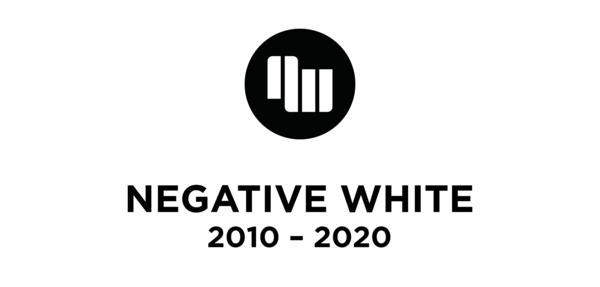Product Management
Culture of Speed
Why the culture of speed makes it hard for newsrooms to embrace a product mindset.
The business of news is fast-paced. New information surfaces faster than ever before; bulletins, press releases, and tweets drop in by the second. For the past years, newsrooms had to adapt to process the ever-faster spinning news cycles, verifying and curating the most important and relevant information for their audiences.
The traditional deadline approach from print times has been largely abandoned in the digital publishing realm. Instead, stories get published throughout the day to meet the demand. Then, journalists move on quickly to a follow-up or even a new story.
The increased pace creates many challenges around journalism itself worth exploring. However, this culture of speed established in newsrooms also makes it difficult for media organisations to embrace the transformation to a product-focused mindset fully.
Agility On Steroids
People working in product management—including myself—tend to complain about the newsroom's lack of understanding of agile development. There are undoubtedly true aspects to this.
Usually, a story is refined until published; changes occur rather occasionally than institutionalised. The journalists' strive to perfection, paired with a still roaming deadline socialisation, is fundamentally different from an iterative approach to product development.
But the more I think about it, the less confident I am in this theory that a lack of knowledge is why news organisations struggle with a product mindset. There are two key reasons:
- The production of journalism is in itself an agile process. Like any product, stories go through discovery (research, investigation) and delivery (writing, production) phases. Each draft is a prototype that is being re-iterated based on new information and feedback.
- Newsrooms are masters in agility. No organisation outside of journalism can react as quickly to new developments as newsrooms. In case of breaking news, priorities are shifted dramatically in a matter of minutes. Everyone that has experienced a breaking news situation for the first time is stunned by the impressive adaption rate.
Basically, newsrooms live agility on steroids. They move as fast as the news cycle requires.
Note
This observation is only valid for highly digital, news-driven organisations. Local newspapers still relying heavily on print indeed struggle with agility, while more magazine-like online publications have a much slower pace.
Understanding Cultural Differences
If we leave assumptions and biases aside, we can assess that both the newsroom and the product development work agilely—the main difference is the speed. Additionally, every organisation has a third gear that moves even slower: Strategy. It's even more complex to translate to everyday work in a newsroom than product development; strategy plays hardly any role in deciding which stories to write. On the other hand, strategy is a massive factor in a product roadmap.
Update
Of course, strategy plays a significant role in the editorial direction of a news organisation. However, in journalists' daily work, it isn't as prevalent as it is for product management.

Nevertheless, understanding that the newsroom and product development basically work with the same principles but at different speeds is crucial. It creates a common ground for communication and education, which drive culture change.
As a product manager in a media organisation, it is essential to be aware of the culture of speed inside the newsroom. Furthermore, he has to thoroughly understand how the journalists work on their part of the product. These two factors heavily influence the interactions between newsroom and product to happen.
The culture of speed often leads to exaggerated expectations. "We need feature X now!" or "Why does feature Y take so long?" are phrases you‘ll often come by in discussions with newsroom staff. The constant urgency is deeply engrained into journalists' mindsets and drives their behaviour in every interaction. As a journalist turned product manager, I still feel this need for speed.
Attach Communication To Familiarity
If a product manager has no or little knowledge of the cultural background of these phrases, it gets difficult to find satisfying answers. So, an effective way is to find familiarity in comparisons between journalism and development.
Here are some examples:
- Product development is like investigative reporting. You need time and teamwork to get to the bottom of the user story.
- The roadmap is like an editorial publication schedule. Priorities can change like news cycles, but they usually shift not so fast.
- User-centred development is like optimising a headline. We want to deliver a product that captivates the audiences and keeps them engaged.
You can develop many other comparisons to create a common language and start educating effectively.
Don't Neglect The Differences Either
Naturally, it is not the solution to bridge every difference. Communicating that the differences aren't as big isn't enough. Education still needs to take place.
Product development has more constraints and stakeholders that need consideration, whereas journalists (in an ideal world) only are bound by their principles and only answer to the audience.
Furthermore, product iterations usually have larger leverage and more considerable risk. In comparison, the newsroom speeds through dozens, even hundreds of iterations with every published story, the individual article itself has a much lower impact. Suppose it performs well, great! If it doesn't, it's soon forgotten. There's no lasting impact on the product.
Note
Obviously, journalism can have a great impact on society and policy or the product and brand perception. While an individual story may trigger an impact on the first two, it's far more unlikely that a single story changes how the product or brand is perceived.
However, if there's a product change, it may instantly impact everything—from the user experience to advertising performance. And these changes cannot easily be reverted like a typo in a text. Research, consideration, and alignment must be thorough as the danger of significant impact loom above every feature change. It takes more time.
Best Of Both Worlds
Now, both the immense speed of the newsroom and the slower tempo of product development have their righteous existence. They're needed to create success in their respective fields, and pitting one speed against the other isn't a good idea.
However, to see progress within the shift to a product-driven organisation, we have to think about how we can bring both worlds together and even learn from each other. The questions around effective collaboration can be:
- What can product managers learn from the speed of the newsroom? And vice versa?
- What strategic goals can be translated to product and editorial to enable a department-spanning collaboration?
- Which opportunities provide the best area to grow from each other's strengths?
Ultimately, only joint forces between all departments in the organisation leads to an effective transformation process.
My Spotify Dilemma: The Power of Product
I hate the company but love their product.
My journey into journalism started back in 2007 when I began writing for the school newspaper. Soon after, I collaborated with a photographer and wrote short biographies about the artists he photographed. It was my start in music journalism.
Back then, music streaming was a thing of the future. Peer-to-peer networks like Limewire were one sketchy source for my iPod library, managed on iTunes. I imported CDs from my uncle's vast collection to extend my musical horizon. And I often bought the silver discs at shops and concerts, only to digitise them shortly the next day.
Later, while working on Negative White, the online music magazine I ran for a decade, iTunes was still a vital part of my music consumption. I could add promotional CDs and digital downloads before the release date.
Coming from the iPod and iTunes experience, I soon pivoted to Apple Music as a streaming service; however, I mainly stuck to my own digital library. And I didn't intend to switch to Spotify, mainly because I read all the stories about how little artists earn on the platform.

I can't remember the exact moment–or even the reason for that matter–why I switched from Apple Music to Spotify. But it only made sense: The service gained more traction and influence, alongside the album's downfall and the rise of playlists–the new tastemakers. As a music journalist, I had to be where the magic happened. I had to provide playlists where the audience was.
And I never questioned my move to Spotify again. Then came 2022.
Young vs. Spotify
For those who don't already know what I'm going to talk about: Here's a quick and dirty wrap-up.
Neil Young attacked Spotify for being a platform for misinformation around Covid-19. "I am doing this because Spotify is spreading fake information about vaccines — potentially causing death to those who believe the disinformation being spread by them," he wrote in a now-deleted open letter.
The main reason for Young's anger: podcast host Joe Rogan. In 2020, Spotify struck an exclusive deal with possibly the world's most prominent podcaster. Estimated worth: more than $200 million, as the New York Times lately reported.
However, Rogan regularly delivered controversies around the coronavirus. For example, he took Ivermectin, the infamous horse dewormer, when he contracted the virus. Rogan also was criticised for hosting Robert Malone, a popular figure in the anti-vax movement.
Although Young's fame puts a bigger spotlight on the topic, he wasn't the first to address the issues around Rogan. For example, 270 doctors signed an open letter to Spotify after Malone appeared on Rogan's show.
"Why did Spotify choose Joe Rogan over Neil Young? Hint: It's not a music company."
The preliminary result of Young's protest: Spotify did as he wished and removed his music from the platform. But also, other artists like Joni Mitchell joined Young's cause.
It may seem weird that a music streaming service quickly chose this route. But the Washington Post explains it already clearly in a headline: "Why did Spotify choose Joe Rogan over Neil Young? Hint: It's not a music company." The article highlights Spotify's heavy investment into podcasts and its strained relationship with artists.
Ethical Questions
Since all this went down, the ongoing debate made me think about my relationship with Spotify as a company, as a product, and more generally, about how I consume, enjoy, and value music.

I still maintain an extensive physical collection of CDs and vinyl. And the digital library counts over 30'000 songs that no company can arbitrarily remove. It weirdly comforts me.
And after I learned about Spotify CEO Daniel Ek's €100M investment in defense AI, I had to confront myself with the question: Do I want to contribute to all of this?
Do I want to have a relationship with a company whose primary purpose seems to aggregate data and somehow manage to make us love being spied on—even so far that it can predict our moods?
Do I want to spend money for a service that pays the artists virtually nothing, doesn't take responsibility as a publisher (which Spotify became with its big move into podcasts and Joe Rogan), and doesn't seem to care about their own codes?
Good Intentions
I inherently believe that many of the questions above have to be tackled on a societal level. Spotify is finally seen alongside other platforms like Facebook, Instagram, Substack, and YouTube. We as a society have to conclude how we deal with those platforms and their impact on our lives, communities, and information ecosystem.
However, I, too, have to take responsibility. As a music curator (check out Weekly5 if you're interested), I use Spotify not only privately but also somewhat professionally. So I decided to take action and pledged to buy every song I feature on Bandcamp if it's available. Subscribers can verify it by checking my profile.
And finally, I started to use Apple Music again as a primary streaming service. Here's where the dilemma began to unravel.
The Better Product
I immensely appreciate one particular aspect of Apple Music: the quality is quite frankly astounding. I didn't think that Apple's Lossless format would make such a difference.
Another positive side of Apple Music: I can combine my existing digital collection with the streaming offering. But that's about it for the good things.
I attempted to use Apple Music the same way I use Spotify: Find songs, curate my playlists and listen to them. I don't listen to existing playlists aside from occasionally skipping through Spotify's personalised mix and checking the "Release Radar" every Friday to see if I find something for my Weekly5 curation.
Now, let me illustrate my struggle with Apple Music compared to Spotify with five concrete examples. (Disclaimer: There are far better design reviews out there like this one, this is simply my personal experience.)
The Product Problem of Journalism
Newsrooms are struggling with cultivating a product-driven mindset. Here are some of my thoughts on why this is the case.
I’ve wanted to write another newsletter for quite some time, yet I didn’t find a suitable topic to tackle. Since the last issue, I was heavily occupied with starting as Product Owner of blick.ch.
Additionally to the official certification, I also exchanged with other POs in the media industry. In the process, I realized that many colleagues are struggling with the same issues.
I also remembered an insightful listicle by Konrad Weber about the missing product-driven mindset in journalism [German].
Weber synthesizes his findings in six key reasons:
Learnings From A Decade
What I learned from running an online magazine for ten years.
Hi there, it’s been a long time since the last newsletter. However, I still was shocked that it’s been already three months. Time flew by like a fighter jet, and sometimes I felt like a passive passenger, not a pilot.
The most critical decision in the past months was probably to close down my online magazine Negative White after a decade of voluntary efforts. There are two reasons for the decision:
Increased Workload
By the end of June, I got appointed as product manager for Blick.ch. I’m excited about this tremendous opportunity, and I love to work more on projects, development, and strategy.
However, it adds a ton of mental workload to my already tight schedule as Head of Community and product manager for our newsletters. I felt that I had to re-organize my energy.
Lost Joy
But what really drove the decision was the lack of joy, a general sense of fulfillment in work on Negative White. Sure, there were moments of happiness and success. Nevertheless, the moments when I felt overwhelmed and stressed by the things on my to-do list occurred ever more frequently.
In the very first newsletter issue I sent through Revue, I wrote about three key metrics: joy, relationship, and money. Joy was always the most significant driver for Negative White. Its decrease, therefore, led to the rational consequence: the era had to end. Don’t get me wrong; it was a tough decision nonetheless.

In 2018, I listed some of my learnings that Negative White provided in this newsletter. They’re still valid, but I’d like to offer a synthesized summary here:
Lately, I’ve been thinking a lot about agile development. This year, we’ve been able to deploy a series of new features for our commenting infrastructure. While most of them are invisible to the users, there is one exception: Finally, we’re able to engage in the comment sections clearly labelled as official accounts.

Often, people in the newsroom are staggered about the velocity of new features we manage to release. They tell me about their struggle to get things done. These complaints regularly come from people with a background in journalism. And I think that’s the problem.
Don't ask stupid questions
Why trust is the key ingredient to having quality user feedback.
“Everybody lies” is a New York Times bestseller, proposing that social science approaches are basically worthless. Some arguments may even strengthen the theory by author Seth Stephens-Davidowitz. For example, people won’t always tell the truth because the answer contradicts social desirability.
Journalism is no stranger to this behaviour. Surveys often conclude that the audience wants longer, in-depth reporting while data shows otherwise. Of course, you’ve to read those surveys always with a grain of salt.

However, is data the “truth serum” Stephens-Davidowitz claims it to be? When it comes to design improvements, it’s probably a viable solution to observe how people use a product rather than to ask actively to avoid a distorted image. This process results in constant iterations of improving and testing. That’s a perfectly fine use of data.
Now, I see two significant pitfalls with the sole reliance on data. First and most obvious: Data is also subject to confirmation bias as soon as it gets analyzed by someone.